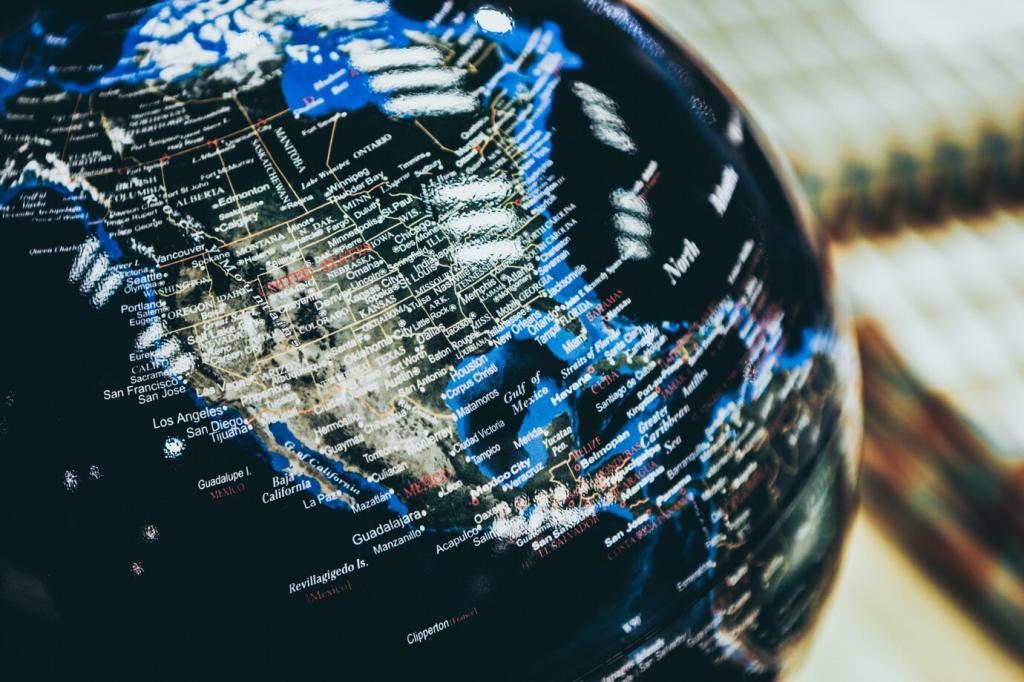Today’s chosen theme: Economic Ramifications of International Trade Wars. Explore how tariffs, retaliations, and fractured alliances ripple through prices, jobs, investments, and markets—plus practical ways to navigate uncertainty. Join the conversation, share your experiences, and subscribe for weekly evidence-based insights.
How Tariffs Reshape Global Supply Chains
When tariffs land on crucial components, costs surge before a product even leaves the factory floor. Firms scramble to renegotiate supplier contracts, qualify alternative materials, and redesign bills of materials—often at the expense of speed, margins, and hard-won quality consistency.

Price Pass-Through and the Cost of Living
01
Tariff Pass-Through to Shelf Prices
Retailers frequently pass a portion of tariffs onto shoppers, though not always one-for-one. Competitive pressure, contracts, and brand strategies shape the outcome. In practice, consumers see higher tags, fewer promotions, smaller package sizes, or narrower assortments—silent signals of policy friction.
02
Substitution and Quality Trade-Offs
When favorite imports jump in price, consumers substitute—often to regional brands or different materials. Yet substitutions can carry quality compromises, shorter warranties, or unfamiliar sizing. Households navigate these trade-offs carefully, weighing immediate savings against durability, repairability, and total cost of ownership over time.
03
Distributional Effects Across Households
Trade-war inflation can be regressive when essentials face higher tariffs, hitting lower-income families hardest. Meanwhile, wealthier households better absorb price hikes or access alternative channels. Understanding who bears the burden shapes smarter policy design—and your insights can inform our upcoming research series.
Corporate Strategy, Investment, and Risk
Policy uncertainty often delays factory expansions and tooling decisions. CFOs model tariff ranges, best-case exemptions, and worst-case retaliation. Many adopt modular investments—smaller, reversible steps—so they can pivot suppliers or geographies without sinking capital into stranded, single-country assets.
Employment, Wages, and Productivity
Sectoral Winners and Losers
Protected industries may see short-term hiring, while downstream manufacturers paying more for inputs cut shifts. Exporters in targeted markets face sudden demand cliffs. The net outcome depends on a region’s industrial mix and its ability to retrain workers into adjacent, less-exposed roles.
Automation as a Buffer
Some firms invest in automation to offset tariff-driven cost increases. Robots don’t pay duties, after all. Yet automation favors capital-rich companies, potentially widening gaps in wages and opportunity unless policies also support training, mobility, and small-business access to modern production technologies.
Innovation and Long-Run Productivity
Persistent uncertainty can dampen R&D commitments, but constraint also sparks ingenuity: new materials, modular designs, and data-rich forecasting. The long-run productivity outcome hinges on whether firms channel today’s pressure into process improvements rather than defensive cuts that starve future competitiveness.
Markets, Currencies, and Capital Flows
When trade tensions spike, investors crowd into perceived safe havens, lifting certain currencies and government bonds. Volatility rises as algorithms chase momentum. For real-economy firms, these swings affect borrowing costs, export competitiveness, and the timing of capital-raising windows more than headline duties alone.


Markets, Currencies, and Capital Flows
Export-reliant emerging markets feel trade wars in their current accounts, currencies, and sovereign spreads. Capital outflows amplify domestic funding costs, challenging banks and corporates. Countries with stronger reserves, credible policy frameworks, and diversified partners weather the storm better—stories worth sharing from your region.
Policy, Institutions, and the Path Forward
Dispute mechanisms can temper escalation, but paralysis or rule-bending erodes trust. As cases backlog, countries pivot to bilateral deals and ad hoc exemptions. Durable solutions require revitalized institutions that deter circumvention without stranding legitimate development and environmental goals.
Policy, Institutions, and the Path Forward
When specific sectors bear disproportionate pain, targeted relief—credit guarantees, training vouchers, or export grants—can bridge transitions. Well-designed programs sunset responsibly, focus on productivity, and minimize distortions. Tell us which interventions worked in your community during the last tariff flare-up.


History, Anecdotes, and Lessons Learned
Smoot–Hawley’s Cautionary Tale
The 1930s episode reminds us that broad tariffs amid economic weakness can deepen downturns and invite retaliation. While today’s economy is different, the core lesson endures: targeted, rules-based solutions tend to outperform sweeping, emotion-driven barriers that boomerang through supply chains.
The 2018–2019 US–China Escalation
Companies accelerated a China-plus-one strategy, quietly qualifying suppliers in Vietnam, Mexico, and Malaysia. Some paid higher unit costs but gained geographic resilience. A footwear brand told us their dual-sourcing saved a key holiday season when one port faced unexpected inspection slowdowns.
A Mid-Sized Exporter’s Real Costs
An industrial pump maker shared how a sudden tariff hike erased margins on a flagship contract. They renegotiated delivery schedules, redesigned a component to qualify for a different code, and won back profitability—proof that creative adjustments can soften trade-war shocks.

